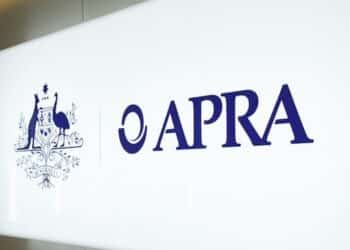According to the proposals paper, the industry funding model will recover the actual costs that ASIC spent during the financial year to regulate each sub-sector.
When it comes to regulating the financial advice sector, ASIC expects it will spend $24 million in 2016-17, 10 per cent of its total regulatory budget.
Personal advice providers on Tier 1 products will be levied the most at $22 million to recover ASIC’s costs, or $960 per adviser on the financial advisers register.
Meanwhile, personal advice providers on Tier 2 products will be levied $900,000. General advice providers to retail and wholesale clients will be charged $800,000 and wholesale advice providers to wholesale clients will be charged $200,000.
These levies are different from those in an August 2015 consultation paper, which proposed a levy on financial advice providers on Tier 1 products that involved a fixed component of $1,350 and a variable component of $470 per adviser.
“Submissions strongly opposed this model due to concerns it would place a larger burden on smaller licensees relative to larger licensees due to the fixed component. This concern has been addressed by moving to a fully variable levy,” the new report states.
However, the paper added that ASIC does not propose to charge a separate levy on robo-advice providers “at this time”.
The new funding model is part of a package of reforms the government announced in April in an effort to bolster the role of ASIC.
“The proposed industry funding model will include measures to support ASIC becoming a stronger regulator, through increased accountability, transparency and engagement with consumers and its regulated entities,” the paper states.
Submissions on the proposals paper will be open until Friday, 16 December, with a view to implement the funding model in the second half of 2017.




While AsaIC is run by the Labor appointees, Kell and Medcraft, it will never be open to sensible dialogue on the FP profession or how it should be governed. If we had a real Liberal prime minister with backbone, they would be out and then real progress could perhaps be made.
If it moves us closer to being a profession then let’s just suck it up, stop the sooking and get on with it. Send me the invoice, I’ll pay it.
Matthew, how can this move us closer to being a profession? is this not the reason why we pay taxes? The ATO is not subsidized by Accountants nor the Law Courts by Lawyers? It really does need a rethink, also, free speech and the ability to critically argue a point is the backbone of our democracy, not just “being a sook” sorry but i don’t and can’t agree with your comments.
What next? Will the Government levy the legal profession for the cost of running the courts or accountants for running the ATO? The Government created this regulatory overload and now doesnt want to pay for its supervision.
The thinking behind this funding model is flawed and needs to be rethought immediately. This is not User Pays as far as Financial Advisers go, this is good advisers having to bear the costs of bad advisers, when good advisers have no “gatekeeper” capacity. The onus for cost sharing should fall on the Dealer Groups that oversaw the poor advisers. That way, Dealer Groups will need to be much more judicial about who they licence. With the current proposal, Dealer Groups can take on anyone who is RG146 qualified, even if that adviser has been turfed out of other groups for poor practices, and with minimal consequences if ASIC then finds they are of poor character or have poor operational standards. If the costs were applied to Dealer Groups who rely on ASIC to remove people from the industry (when ASIC should be a last resort), then we would really start to see proper vetting of advisers at the licensing level. Licensees chasing volume would stop licensing marginal characters.
Yes once again it is the bigger end of town that will be ok with this as they will just increase fees as they did last time. The smaller more personal financial plannners will either just wear it or shut down leaving clients open to the wiles and inaccurate advice from people who know nothing and purport to know all! I saw a client last week who was told by a professional person in a position of trust that as he had some super he could not get a Disability Pension which is rot of course BUT he has not claimed and it is now 5 months since this was told to him. This is why we exist but unfortunately the bigger end of town will end up being the only choice soon.
Determined to kill the Financial Planning Industry. $960 per adviser per year so that ASIC can keep making Institutions and other providers appoint external reviewers to do their work for them.
They make Accountants get appointed as AR’s then slug them these fees, so will they be surprised when Personal Advice by an Authorised Representative doesn’t exist anymore and people get Financial advice under the table or from taxi drivers.
The initial cost to our business was going to be $95k and under this “fairer” method it will be $192k. And thats assuming they only charge for AR’s and not the Corporate AR’s.
ASIC and the Government who think this up are an absolute joke and neither have any business sense.